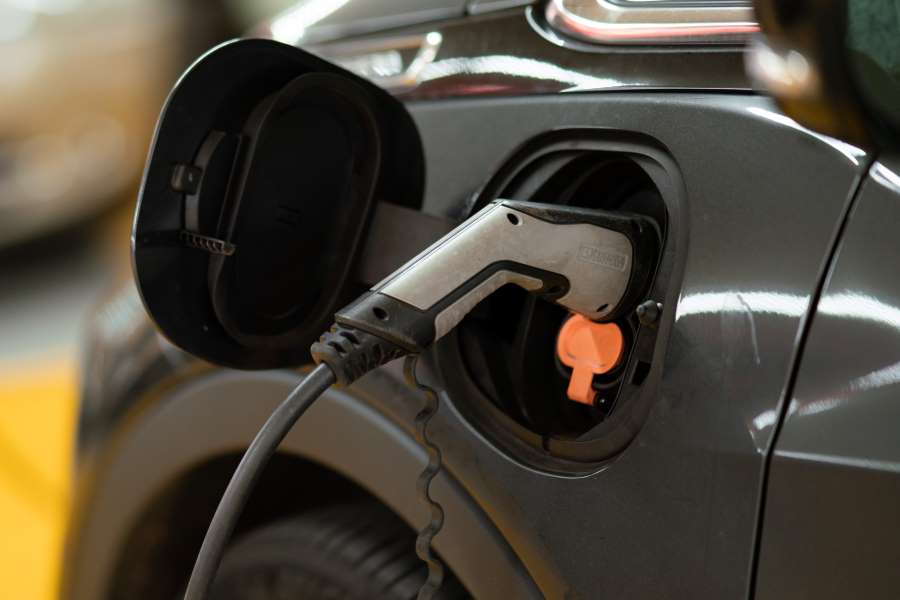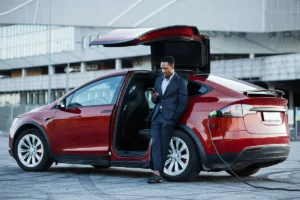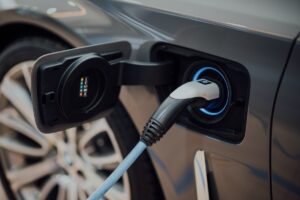Charging electric cars at the workplace is becoming increasingly important, as it brings benefits for both the employer and the employee. This trend is being driven by the increasing number of electric cars on the roads and the growing demand for sustainable transportation solutions. However, the installation of a charging infrastructure requires careful planning. This article provides an overview of the aspects that companies should consider.
Contents
Advantages of charging at the workplace
A convenient charging option directly on site can offer your employees great added value. Charging the electric car at the workplace is tax-free for the employee if it is done in addition to the salary. Charging electric cars at the workplace can help reduce CO₂ emissions and increase the use of electric vehicles by also reducing range problems. As a company, you can integrate the charging concept into a sustainable corporate strategy in order to project your image positively to the outside world and attract new employees.
What are the tax advantages of charging at work?
There are tax concessions and tax exemptions for charging equipment and charging current, which benefit both employees and employers.
Charging at the employer’s premises is tax-free
The free or discounted charging of electric or hybrid electric vehicles at the employer’s premises isexempt from tax and social security contributions in accordance with Section 3 No. 46 EStG if the employer grants the benefit in addition to wages. This applies to private and company vehicles. The company charging current is also exempt from social security contributions. The regulations apply until 2030.
Charging device for the home (wallboxes)
Wallboxes that are also provided by the employer for private use are also tax-free in accordance with Section 3 No. 46 EStG – but the charging current is not. The employer can subsidize the purchase of a wallbox by the employee at a flat rate of 25 percent (§ 40 para. 2 sentence 1 no. 6 EStG). The regulations apply until 2030 and are also exempt from social security contributions.
Flat rates for private charging of the company car
As proof of the actual costs would require a separate meter and regular proof, the following flat rates apply for simplification:
Monthly flat rate for additional charging facilities at the employer’s premises: 30 euros per month for electric vehicles, 15 euros per month for hybrid electric vehicles
Monthly flat rate without additional charging option at the employer’s premises: 70 euros per month for electric vehicles, 35 euros per month for electric hybrid vehicles (until 2020: 25 euros)
Further financial incentives for electromobility
Find out about current funding programs at federal level and local funding programs at state level for companies and municipalities. In Berlin, for example, emo Berlin offers detailed information on this topic.
In addition, the GHG quota offers vehicle fleets the opportunity to In addition to the subsidies for e-vehicles, further costs can be deducted. Thereby is an emissions trading scheme designed to encourage companies and private individuals to opt for climate-friendly means of transportation.
Necessary investments and planning
Even though on-site charging offers many advantages, it requires initial investment and organization. To enable charging, sufficient charging stations or charging points must be installed depending on the number of electric vehicles. This requires planning, investment and possibly also conversion measures.
If several electric vehicles are charged at the same time, efficient load management should be implemented to avoid overloading and keep costs under control. This required careful planning and consideration of the charging current for each vehicle. The precise recording and billing of the charging current can also mean additional administrative work.
What companies should consider when charging at the workplace
Companies considering the introduction of a charging solution on site should consider the following aspects:
General conditions and planning of the charging solution
- Define the goals that your company should achieve with the introduction of the charging solution, such as cost savings, CO₂ savings, employee development or image. Communicate these goals within the company accordingly and allow everyone to participate.
- Suitable location: Is there enough space and is the location accessible for everyone? What about the electrical and data installation options, do walls or roofs have to be erected and are these subject to planning permission? If you are not the owner, you must obtain permission from the landlord.

Charging an electric car at the workplace offers both tax and environmental benefits.
- Design of charging stations: Check whether a wallbox or a charging station is more suitable. Make sure that the charging points are suitable for different electric car models and can be flexibly expanded in the future. If necessary, introduce load management to avoid additional costs when charging several vehicles at the same time.
- Professional support: Many energy suppliers and specialists for commercial charging solutions offer design and installation from a single source, such as Vattenfall or Mobility House . This allows you to design a charging solution that precisely meets your needs. The location and the electrical system must always be checked by a qualified electrician.
Training employees in the use of charging points in the company
The legal requirements and specifications can vary depending on the country, industry and company size. Some important points are listed below:
- The training must ensure that employees are informed about the safe operation of the charging stations, e.g. how to avoid electric shocks and how to handle the charging cables correctly.
- Emergency measures, e.g. procedure in the event of a power failure, cable fire or other incidents in connection with the use of the charging points.
- If charging stations have a usage management or payment function, it is important to inform employees about data protection, how their personal data is handled and which data protection guidelines apply.
Billing of the charging current
Companies can offer the charging current free of charge, at a discount or for a fee. Decide which model makes the most sense for your company. If a charge is levied, the quantity of electricity supplied and the costs must be recorded and billed accurately. A monthly lump sum is also possible. Alternatively, you can also rely on external billing service providers to measure and bill the charging current. In our article E-cars as company cars, you can find out more about the billing of charging current.
More safety in the fleet
Instruct your drivers in the safe handling of vehicles and how to behave in the event of accidents via an e-learning course.
The most important facts about charging an electric car at the workplace
Charging at the workplace offers numerous advantages for employers and employees.
It is important to choose a suitable charging capacity and pay attention to aspects such as load management, protection and expandability.
The charging current can be billed in different ways, with tax advantages for both sides.
Further Fleet Knowledge
If you liked this article and would like to know more about this topic, we recommend these articles.

GHG quota trading explained: Opportunities for the fleet



